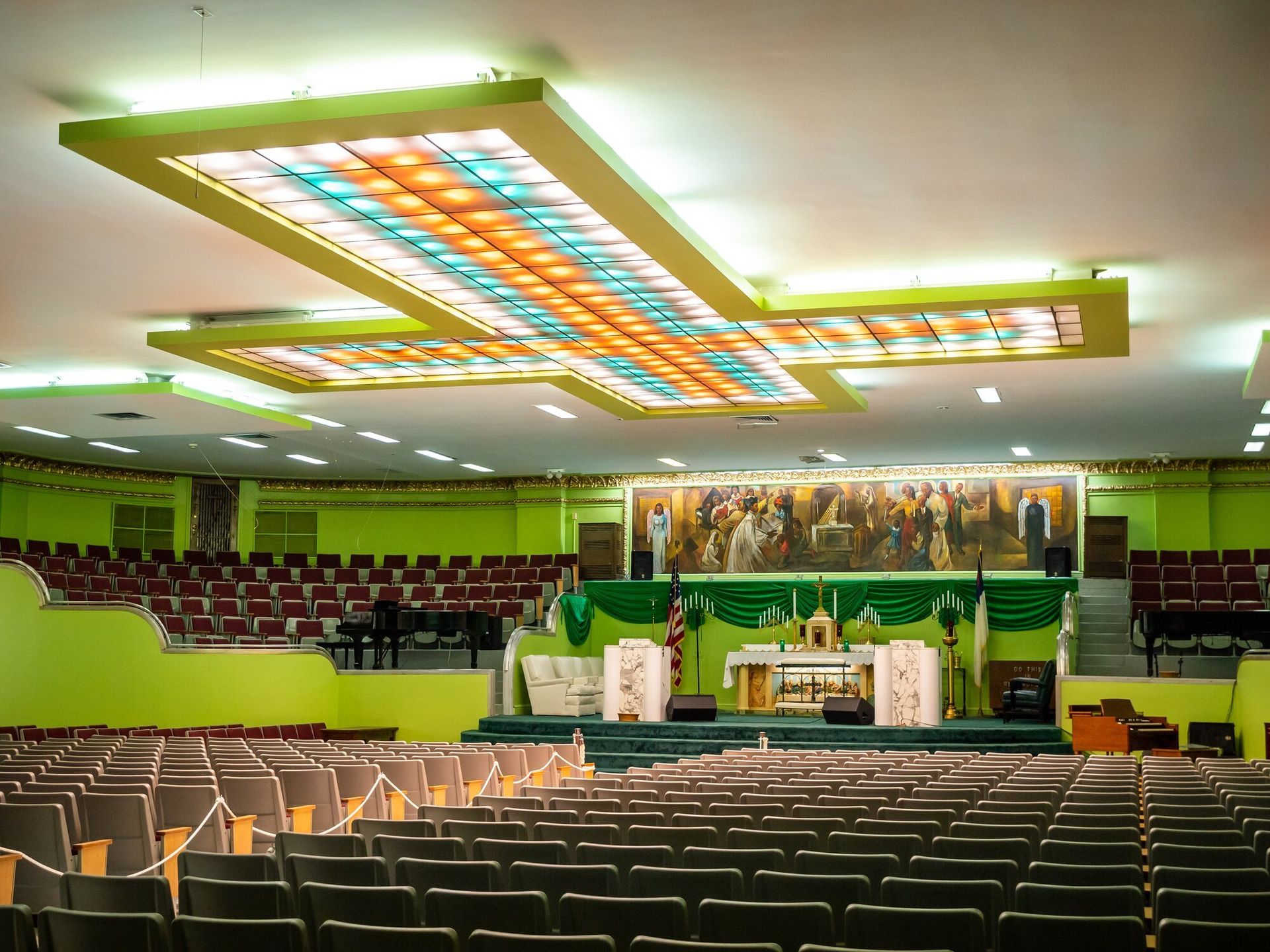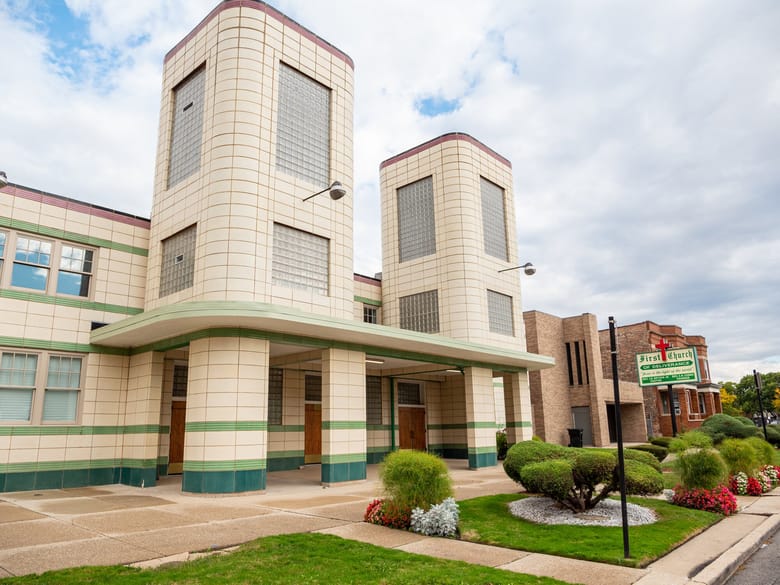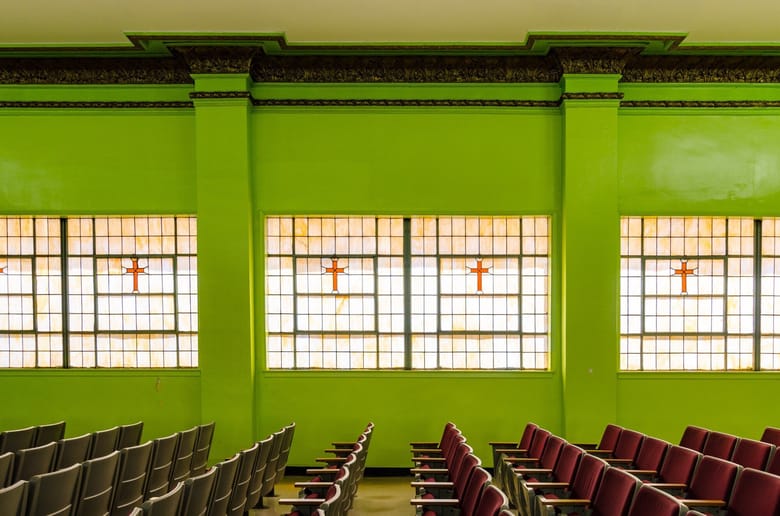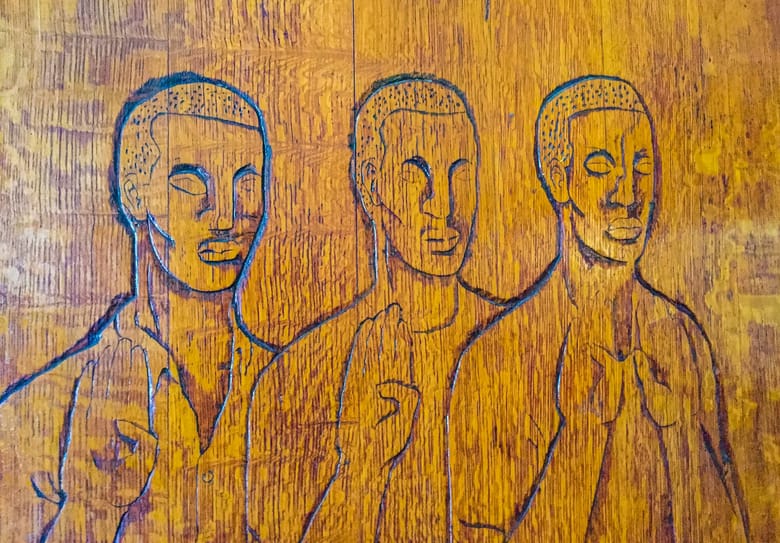Program in collaboration with the African American Cultural Heritage Action Fund of the National Trust for Historic Preservation
Black Modernism and the Spatial Modernity of the Black Church
Join us in the sanctuary of The First Church of Deliverance, designed in 1939 by Walter T. Bailey, for a salon-style seminar on Black Modernism and the architectural modernity of Black American traditions with leading voices in architectural history, criticism and preservation. There will also be an optional pre-event reception from 4:30 p.m. - 5:45 p.m.
This program is part of a larger series of national conversations curated by the African American Cultural Heritage Action Fund of the National Trust for Historic Preservation, dedicated to reflection and dialogue on the evolving definition of Black Modernism and the undervalued legacy of African American contributions to modernist architecture. Set within one of Chicago’s most iconic examples of Black sacred modernism, the event brings together leading voices in architectural history, criticism, and preservation.
The evening will feature presentations by Lee Bey, architecture critic for the Chicago Sun-Times and ABC7 News Chicago and author of Southern Exposure: The Overlooked Architecture of Chicago’s South Side whose work documents and interprets the built environment through the lens of race, politics and power, and Charles L. Davis II, African American Cultural Heritage Action Fund Fellow and Associate Professor of Architectural History and Criticism at the University of Texas at Austin, whose research explores the role of racial identity and race thinking in shaping architectural history and contemporary design culture. Following the presentations, a moderated conversation will be led by architect and cultural preservationist Brandon Bibby, Senior Preservation Architect for the African American Cultural Heritage Action Fund and Manager of the Conserving Black Modernism initiative. The discussion will open space to collectively consider how Black Modernism continues to inform our understanding of identity, memory, and the built environment.
Learn more about the $4.65 million Conserving Black Modernism partnership between the Getty Foundation and the African American Cultural Heritage Action Fund at the National Trust for Historic Preservation here.


Keynote speaker
Lorem ipsum dolor sit amet, consectetur adipiscing elit. Phasellus leo nulla, porta a ligula ut, commodo ultrices quam. Suspendisse non mollis odio.
Sed vestibulum ut arcu vel feugiat. Morbi iaculis augue risus, at pharetra nibh blandit nec. Etiam feugiat volutpat nunc vel aliquet. Maecenas mollis turpis at odio fringilla, eget iaculis tortor congue.
Speakers:
Brandon Denell Bibby is an architect and artist raised in the plains of Arkansas, where the Delta meets the Ozarks. His work navigates the impacts of racialized space on the American landscape, utilizing the practice of preservation to counter the erasure of Black spatial histories.
Bibby is the Senior Preservation Architect for the African American Cultural Heritage Action Fund at the National Trust for Historic Preservation, where he advances a portfolio of projects for the largest initiative in the United States dedicated to the preservation of Black spaces. In this role, he advises on strategies for treatment and works alongside site stewards to scope and manage capital projects. Notable works include Roberts Temple Church of God in Christ in Bronzeville and the Langston Hughes Residence in Harlem. He also manages Conserving Black Modernism, a $4.6 million initiative with Getty supporting 24 modernist sites designed by Black American architects.
Prior to joining the National Trust, Bibby served as Senior Architect and Conway Space and Society Fellow in the Public Memory and Memorials Lab at MASS Design Group. He collaborated with community partners to develop commemorative projects and advance work around a central thesis that spatializing memory can foster healing and inspire collective action. Notable projects include the King's Chapel Memorial to Enslaved Persons in Downtown Boston and the Emmett Till & Mamie Till-Mobley Memorial Project in Tallahatchie County, Mississippi. His diverse portfolio spans over a decade in design, programming, and project management, contributing to over 100 built works.
A nationally recognized voice in design leadership, he was featured as part of the African American Design Nexus at the Harvard Graduate School of Design for his contributions to cultural preservation. Celebrated for his commitment to the social responsibility of design, he was honored as a Ones to Watch Scholar by the American Society of Interior Designers. In 2019, he was named a "New Influential" in Arkansas Business's list of 20 in Their 20s.
Bibby has taught and coordinated courses on community-based practice at the Boston Architectural College and served as a Health Equity Advisor with the International WELL Building Institute. His work in preservation, memorialization, and reparation strategy includes partnerships and engagements with the University of Pennsylvania's Center for the Preservation of Civil Rights Sites, the University of Connecticut's Human Rights Institute, and the National Center for Civil and Human Rights
Charles L. Davis II is an associate professor of architectural history and criticism at UT Austin’s School of Architecture. His academic research excavates the role of racial identity and race thinking in architectural history and contemporary design culture. He is co-editor of Race and Modern Architecture: A Critical History from the Enlightenment to the Present (University of Pittsburgh, 2020), a volume which collects 18 case studies on the racial discourses of modern architecture. His book manuscript, Building Character: The Racial Politics of Modern Architectural Style (University of Pittsburgh, 2019), won the Charles Rufus Morey book prize from the College Arts Association. This research links the parallels between racial and architectural characters provided in some of the most influential national building movements of the past, from the pioneering concepts of French structural rationalism and German tectonic theory to the nationalist associations of the Chicago Style, the Prairie Style, and the International Style. Charles is currently working on two book projects. The first is a sole-authored monograph tentatively entitled “Black by Design: A Social History of Black Architectural Modernity," which recovers the overlooked contributions of black artists and architects in shaping the built environment from the Harlem Renaissance to Black Lives Matter. A second book project is a co- edited volume that examines the racial underpinnings of the historiography of nineteenth-century American Architecture. This volume critiques the modernist bent of past history surveys to recover the contentious debates of American nationalism shaping the built environment: from U.S. sectionalism and the Civil War to the migration of nonwhite subjects in the wake of the Spanish-American War and the expansions of American imperialism. The project explores the concept that the nineteenth century was a period of debate and redefinition that should be reexamined for its influence on contemporary patterns of racialist and nationalist thought.
Lee Bey is architecture critic for the Chicago Sun-Times and member of the Sun-Times editorial board where he writes editorials on city governance, neighborhood development, politics and urban planning. Bey is the author of Southern Exposure: The Overlooked Architecture of Chicago’s South Side (Northwestern University Press, 2019), which showcases his architectural photography and social commentary.
Bey is an in-demand speaker and media commentator on architecture, urban planning, Chicago history and late 20th century Black history and culture. He is also an adjunct professor at the Illinois Institute of Technology College of Architecture and recipient of the 2021 Julius Shulman Institute Excellence in Photography Award and the 2019 Distinguished Service Award by the Chicago chapter of the American Institute of Architects. Bey’s previous positions include director of media and government affairs for the Chicago office of SOM, executive director of the Chicago Central Area Committee, and deputy chief of staff for architecture and urban planning under Chicago Mayor Richard M. Daley.
Bey lives in an 1893 rowhouse in Chicago’s historic Pullman community.
Partners
First Church of Deliverance. Photo by Anna Munzesheimer.
First Church of Deliverance. Photo by Anna Munzesheimer.
First Church of Deliverance. Photo by Anna Munzesheimer.
First Church of Deliverance. Photo by Anna Munzesheimer.
First Church of Deliverance. Photo by Anna Munzesheimer.

















